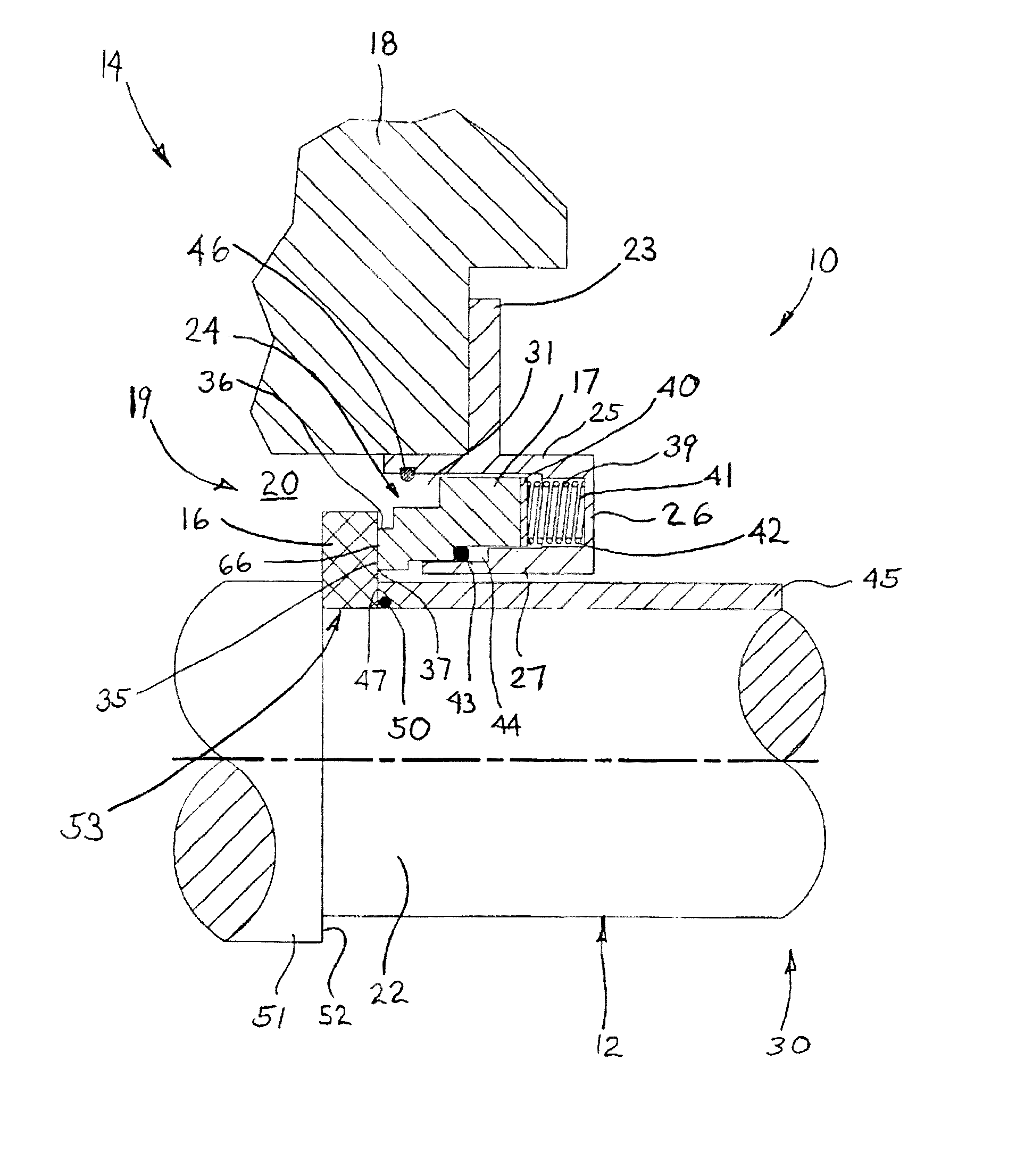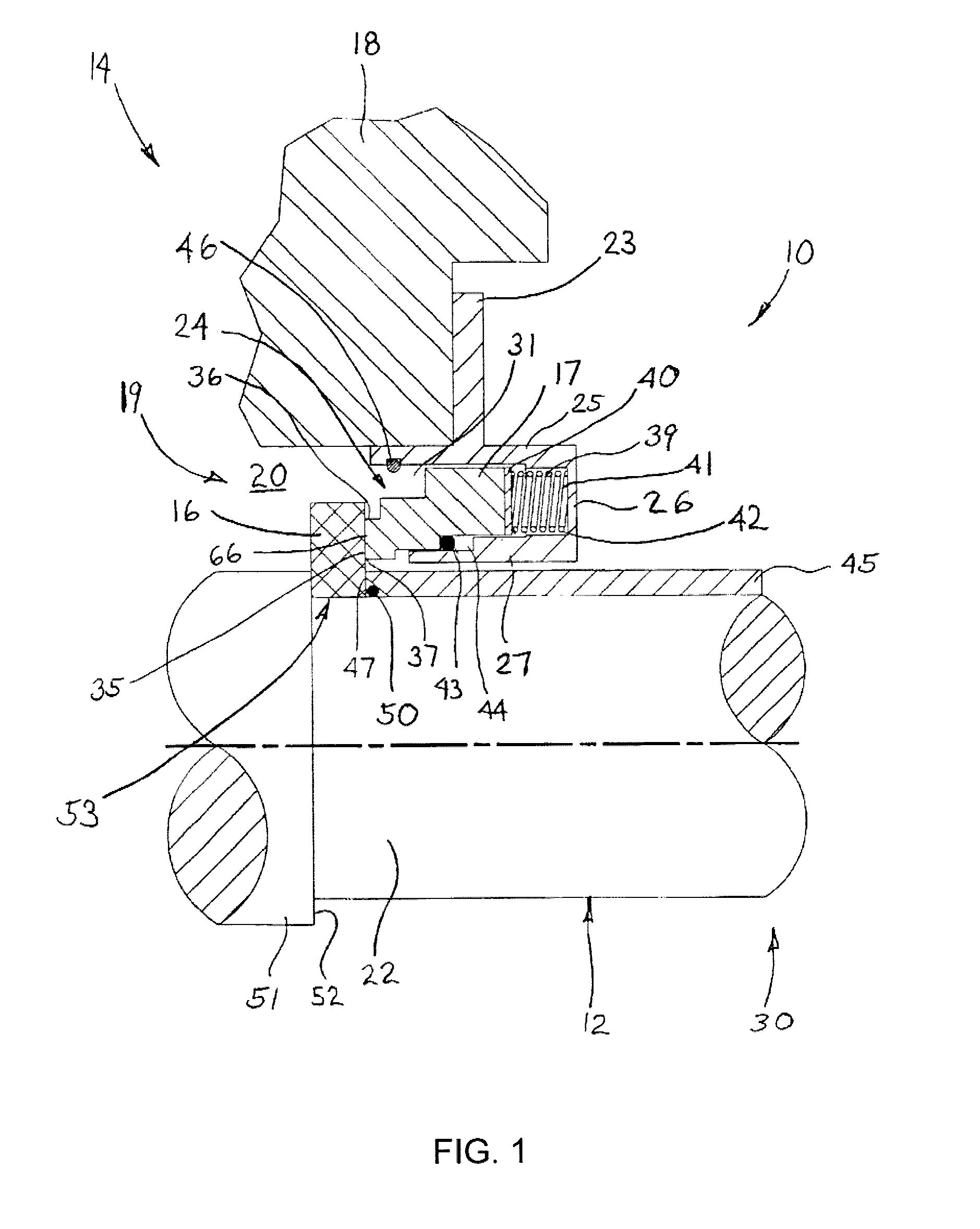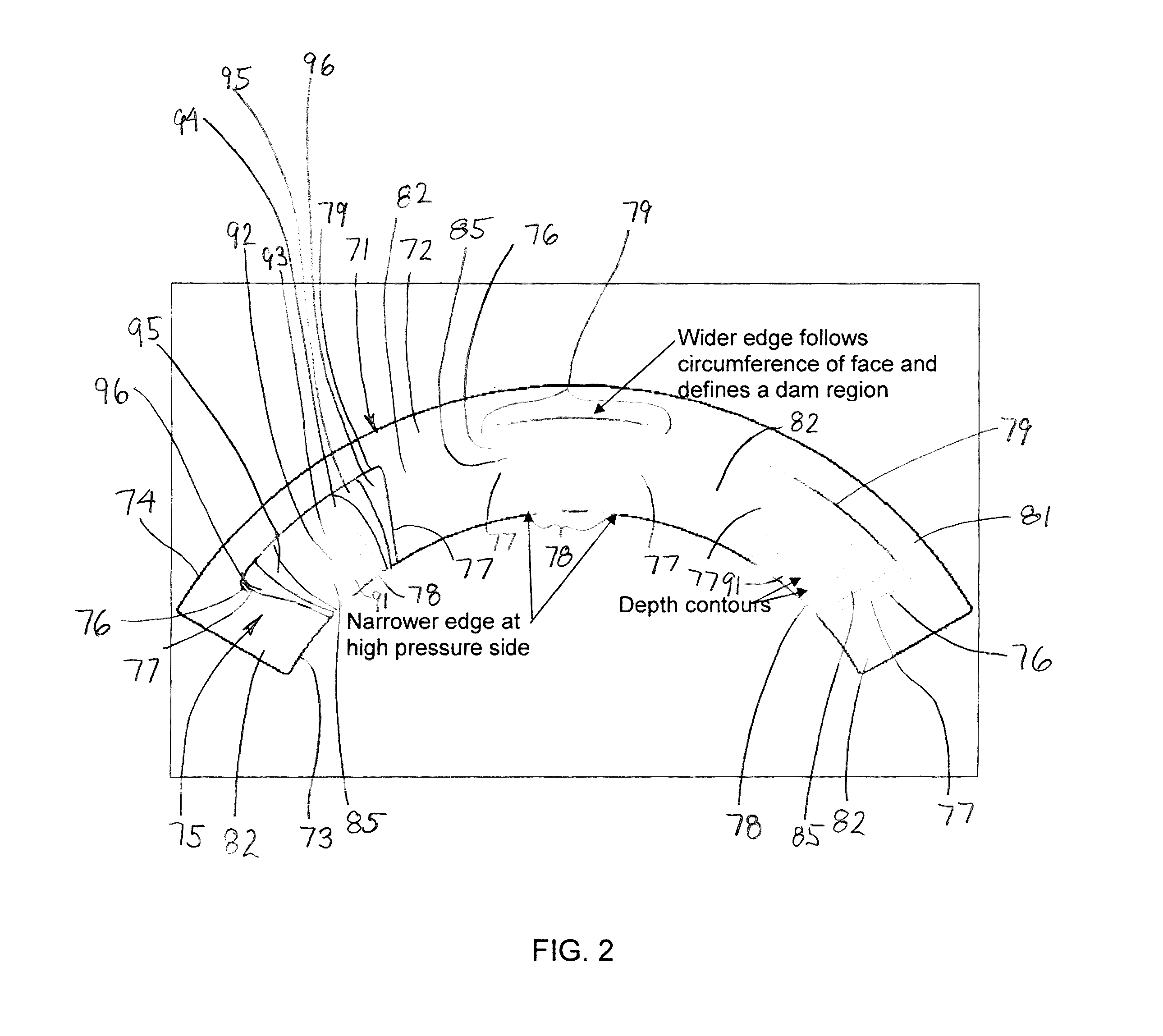Mechanical face seal with a reverse trapezoidal face pattern
a mechanical face and trapezoidal technology, applied in the direction of engine seals, mechanical apparatus, engine components, etc., can solve the problems of uni-directional patterns only being effective, no longer operating in the opposite direction during shaft rotation, and leakag
- Summary
- Abstract
- Description
- Claims
- Application Information
AI Technical Summary
Benefits of technology
Problems solved by technology
Method used
Image
Examples
Embodiment Construction
[0043]Referring to FIG. 1, a mechanical face seal 10 is illustrated mounted on the rotatable shaft 12 of a machine 14. The exemplary mechanical seal 10 includes a pair of concentric seal rings 16 and 17 which respectively operate as a rotor and a stator and effectively prevent fluid leakage along the shaft 12. Either of the seal rings 16 and 17 and most preferably, the seal ring, such as a silicon carbide ring, mating with a carbon ring is provided with a reverse trapezoidal face pattern to provide improved performance. As will be described in greater detail hereinafter, the reverse trapezoidal face pattern incorporates a sinusoidal or similarly shaped depth profile wherein the trapezoid shape is arranged with the narrower edge located on one of the ring diameters so as to communicate with the high pressure side of the seal 10, and the wider edge of the face pattern forms a circumferential dam region towards the low pressure side of the seal 10.
[0044]It should be understood that FIG...
PUM
 Login to View More
Login to View More Abstract
Description
Claims
Application Information
 Login to View More
Login to View More - R&D
- Intellectual Property
- Life Sciences
- Materials
- Tech Scout
- Unparalleled Data Quality
- Higher Quality Content
- 60% Fewer Hallucinations
Browse by: Latest US Patents, China's latest patents, Technical Efficacy Thesaurus, Application Domain, Technology Topic, Popular Technical Reports.
© 2025 PatSnap. All rights reserved.Legal|Privacy policy|Modern Slavery Act Transparency Statement|Sitemap|About US| Contact US: help@patsnap.com



